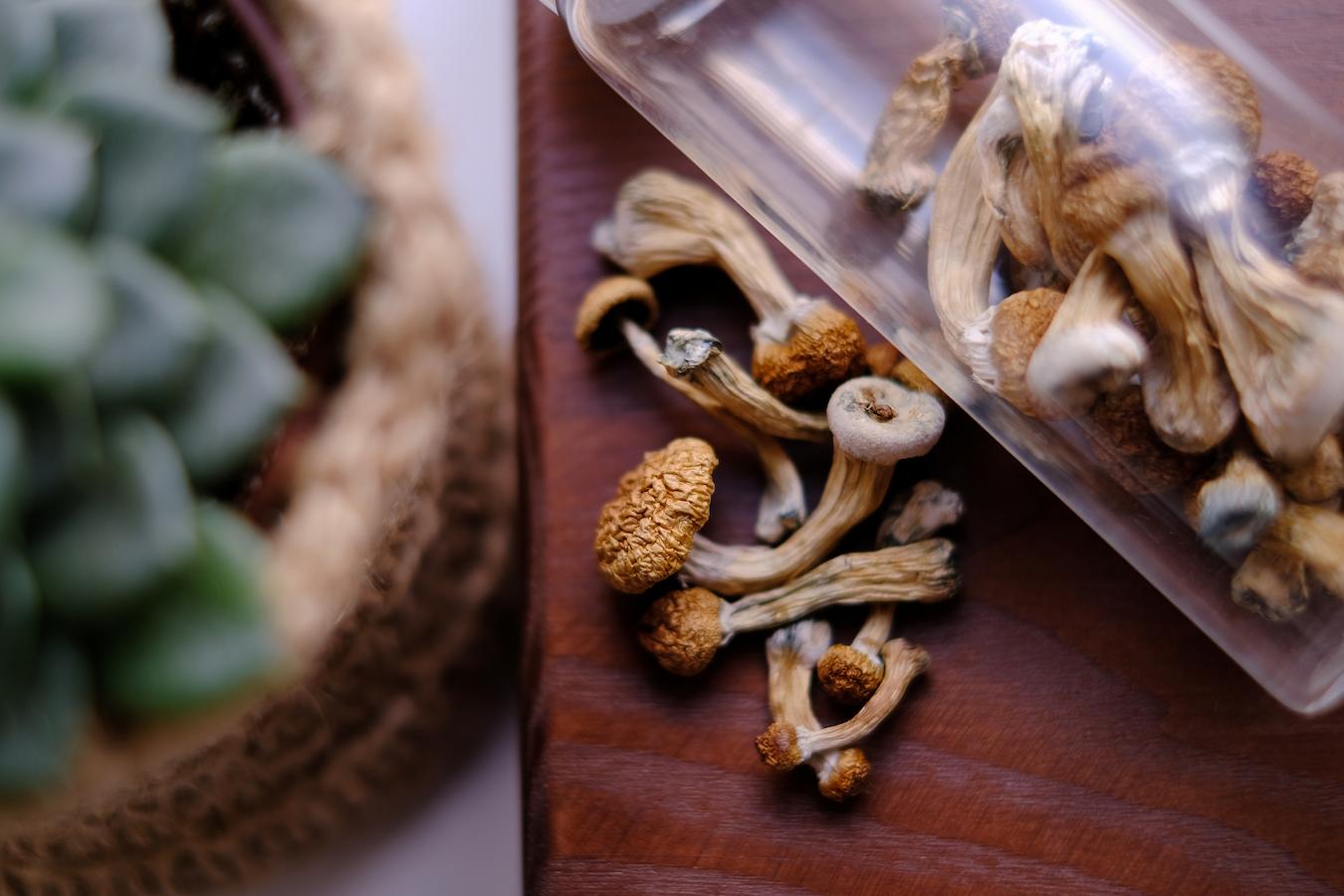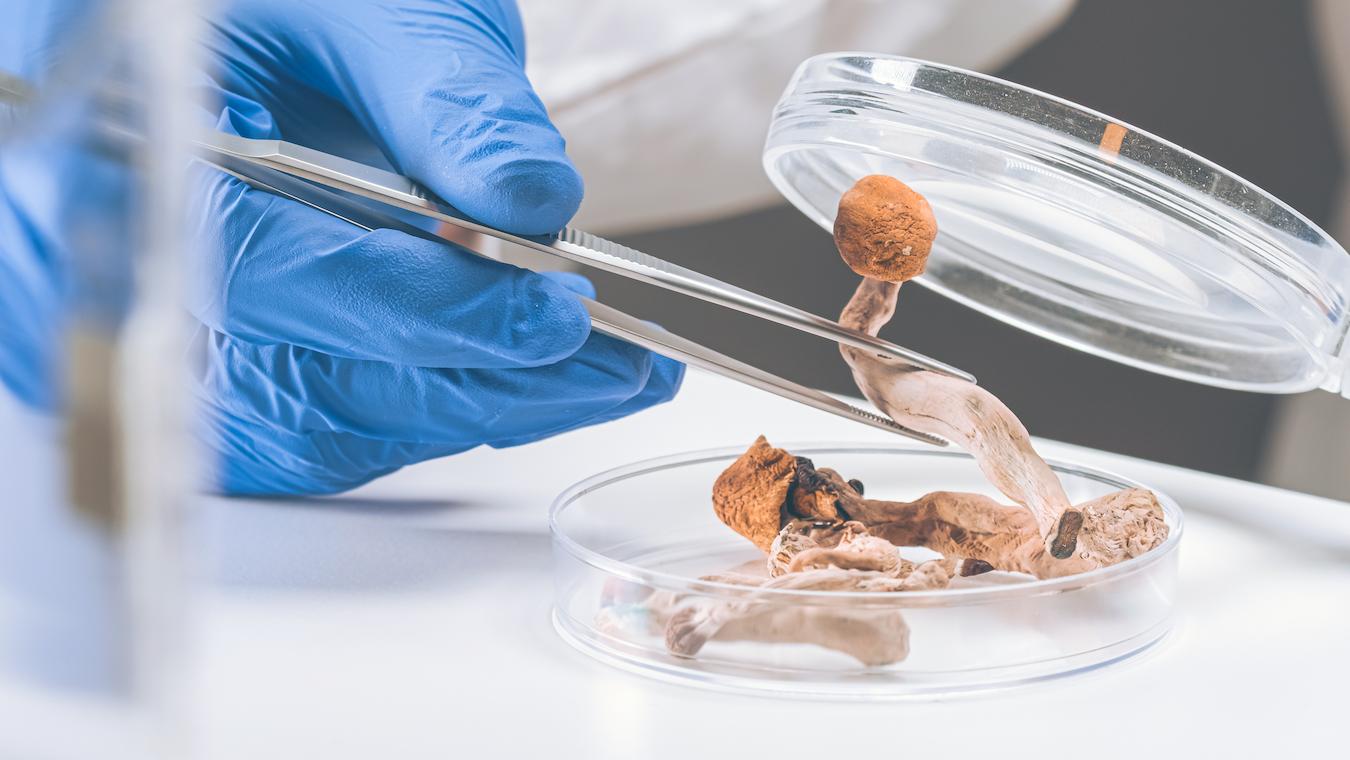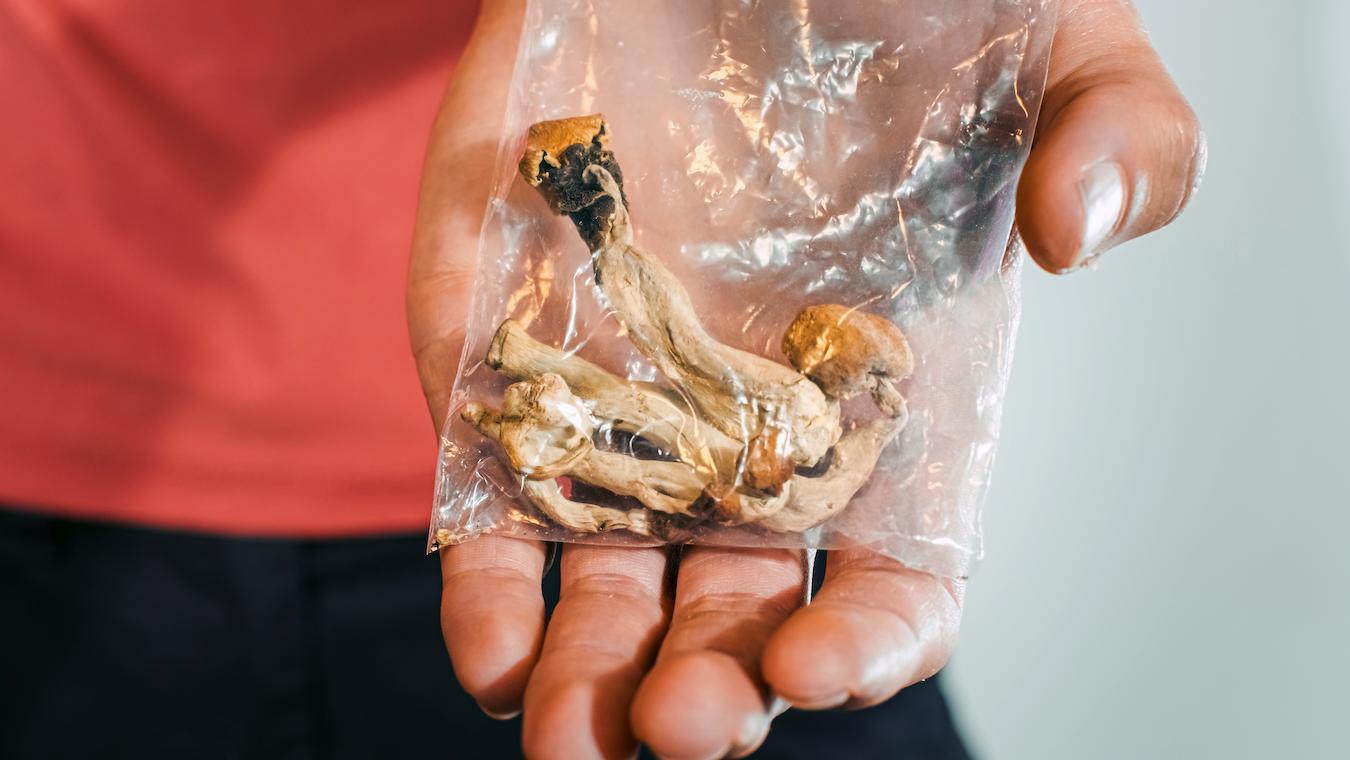What Is Microdosing? Here’s Everything You Need To Know

One international study found that 79% of people who microdose have experienced improvements in their mental health. Lately, it seems like microdosing keeps popping up everywhere. As more people turn towards psychedelics as a way to “hack” their brains, sharpen their senses, or get a buzz without the booze, there’s no doubt that the trend of microdosing is on the rise.
At a Glance
- Microdosing is a practice where you take a small amount of a psychedelic drug on a set schedule.
- There's a big difference between a microdose and a macrodose, and the amount you should take can widely vary.
- There are many myths that surround psychedelic drugs and microdosing, but there are also plenty of potential health benefits.
Are you curious about this growing wellness trend? What even is microdosing, and how safe is it? Read on to learn everything you need to know about microdosing.
See Related: What Is A Tincture? Uses, Benefits, And More
What is Microdosing?
Put simply, microdosing is taking a very small amount of a psychedelic drug on a regular schedule. A true microdose is a sub-perceptual dosage—meaning you shouldn’t feel any of the extrasensory effects of the psychedelic while hopefully still benefiting from the many proposed advantages.
What are the Effects of Psychedelic Drugs?
Psychedelics are most known for their hallucinogenic properties. On a full dose, you may experience distortions of all of the senses and perceive things that aren’t actually real. Other effects of hallucinogenics on the larger scale include:
- Heightened feelings and senses, such as experiencing brighter colors.
- Sensational confusion - for example, seeing sounds or tasting a color.
- Increased energy levels
- Changes to one’s experience of time
- Divergent thinking
- Improved mood
These are largely considered to be positive effects. Hallucinogenics are strongly associated with helping the user alter their perception to understand more about themselves and the world around them. Negative side effects can include a racing heart rate, nausea, changes in mood, confusion or disorientation, anxiety, paranoia, and panic attacks. These can be intense and potentially lead to more serious medical emergencies.
There are a lot of reasons why someone might want to undergo a psychedelic experience. Microdosing can appeal to those looking to slowly acclimate and work up to taking a larger dose. It can also appeal to those who are simply curious about the potential benefits of microdosing.
Microdosing is a way to dramatically reduce the risks that come with taking hallucinogenics. At the sub-perceptual level, most regular microdoses report feeling normal with a slight boost to their mental well-being.
The most common substances to microdose are psilocybin (the main psychoactive ingredient in mushrooms or “shrooms”), LSD, MDMA, cannabis, and ketamine. In this article, we’re going to focus on microdosing psilocybin and the effects associated with regular, minute quantities.

How Much is a Microdose?
When it comes to “magic mushrooms” and other hallucinogenic substances, there’s a significant difference between a microdose and a macrodose.
A microdose is around 10-20% of the dose that would cause a psychoactive response. For dried mushrooms, this would be around 50-200 mg or 0.05-0.2 g. At this dosage, you may not feel much of a difference for the first few times. You should instead be on the lookout for gradual changes over time.
Advocates for microdosing recommend keeping a journal so that you can reflect and take note of the ways (if any) it is making a difference for you. A microdose shouldn’t be a major event in your life; it should be subtle improvements over the course of your cycle.
Sorting Facts from Fiction
There have been a lot of claims associated with the numerous benefits of microdosing mushrooms. There are also a good number of myths associated with the practice. Let’s start with all the good stuff.
Potential Benefits of Microdosing
There seems to be no shortage of praise for this humble little mushroom. Advocates and enthusiasts have touted no end of incredible mind-strengthening benefits.
Mental Health Benefits
- Decreased anxiety, depression, and/or stress
- Enhanced problem-solving abilities
- Greater focus
- Less distractibility
- Major improvements to creativity and productivity
Emotional Benefits
- Greater emotional stability
- Less social anxiety
- A sense of connectedness
- Deeper self-understanding and capability for introspection
Other Benefits
- Lowered cravings for addictive substances
- Fewer cluster headaches and migraines
- Reduced menstrual pain
- More spiritual awareness
- More physical energy
- Improved cognitive function
Can microdosing psilocybin really do all of that? Unfortunately, that’s harder to determine. Though there are countless recounts of people noticing some or all of these kinds of effects, studies are further behind in scientifically proving many of these claims.
It’s hard to empirically validate the experiences of people participating in studies who have to self-report their psychological improvements.
In one placebo-controlled study conducted in 2021, almost 200 participants reported improvements in their mental and emotional well-being. There were no significant differences between the placebo group and the group that actually microdosing. This suggests that maybe some of these benefits to emotional state, mood, creativity, and more can be attributed to people's belief that microdosing would work.
Placebo effects or not, these were observable differences in just four weeks.
Many other studies note improvements of all kinds, though scientists still haven’t found a great way to design a fully controlled, blind study to measure these results quite yet. Some studies have noted long-term effects beyond the duration of the study.

Bonus: Why Does Weed Make You Hungry?
Common Myths
Even as the many benefits of microdosing psychedelics are explored, there are still many myths floating around. One common myth is that this new phenomenon can’t be trusted. But microdosing isn’t new at all. There is evidence that suggests indigenous people have been taking micro and macro quantities of psychedelics on purpose for thousands of years.
So, even if you’re just now hearing about this, there’s nothing new about it!
"The Scary Psychedelic"
There’s no reason to be afraid of microdosing, especially if you’re dosing correctly. Many who try microdosing without the guidance of an expert can accidentally take too much. Reduce the amount and try again. The key to microdosing is a sub-perceptual amount.
Another common myth is that these substances can be addictive. However, there is very little evidence that someone can become physically or psychologically addicted to psilocybin.
That doesn’t mean you can’t build up a tolerance—you absolutely can. Taking your microdose too often can lead to that amount becoming less effective or not working for you at all. That’s why proponents suggest following a clearly defined protocol when beginning your journey with psilocybin.
Protocols and Methods for Microdosing Psychedelics
It’s important to lay out exactly how much psychedelics you want to consume and how often you wish to take them. Following an existing protocol is a way to safely start microdosing therapeutically while reducing the risk of a buildup in the body or growing tolerance.
The Fadiman Protocol
One of the most popular and beginner-friendly methods for starting to microdose is the Fadiman Protocol. Dr. James Fadiman, sometimes referred to as the “Father of Microdosing,” is a researcher and psychologist who was among the earliest scientists to realize the positive benefits of psychedelics as early as the mid-1960s.
The Fadiman Protocol has a very easy schedule to follow and is often one of the first ones that many people try when starting out. Be sure to start your journey on a day with few responsibilities and no dependents directly in your care.
You’ll want to be able to fully relax in a comfortable environment so you can observe any effects on your body and perception.
Be sure to adjust your dose as necessary. It’s more common to accidentally take too much than “not enough.” Remember, the dose should be sub-perceptual, so if you don’t feel all that different in the beginning, it doesn’t automatically mean that you should take more.
Day 1: Microdose
Day 2: Transition Day
Fadiman calls this day a transition day because the substance may still be present in the body despite not taking another dose.
Day 3: No Dose
This will be a regular day where you also refrain from consuming the substance. Continue reflecting on your experience and noticing your mood and performance throughout the day. This day also helps your body avoid building up a tolerance to your dosage.
Day 4: Microdose
Take your perfect dose again and prepare to repeat the cycle of one day on and two days off.
Ideally, this cycle will repeat again and again for anywhere between four and ten weeks. Afterward, you should fully abstain from psychedelics for at least two to four weeks before starting the full cycle over again.

Stamets Stack
Paul Stamets has a long history as a mycologist and advocate of the medicinal uses of fungi. His methodology for microdosing is called a “stack” because it involves using a combination of nootropic supplements to enhance the effects of psilocybin.
“Nootropic” is a word used for a wide range of substances believed to improve mental function, such as thinking, memory, and acquisition. Our Brain Boost & Focus Nootropic is a formula made with methylene blue that is designed to enhance energy and focus.
Stamets’ research suggests that combining psilocybin with niacin (vitamin B3) and lion’s mane (an edible mushroom with interesting health benefits) can help highlight the cognitive effects, promote brain health, and increase focus. However, some people can be sensitive to B3 and may find that this supplement's flushing effect feels like a slight burn or itch. This should wear off within a few hours, but this may not be the right protocol for you.
Generally, the Stamets Stack consists of 0.1-0.3 g of dried mushrooms, 50-100 mg of lion’s mane extract, and 100-200 mg of niacin.
-
Days 1-4 - Microdosing days
-
Days 5-7 - Transition days
-
Days 8-11 - Microdosing days
-
Days 12-14 - Transition days
That’s four days on, then three days off. You’ll repeat the cycle for four to six weeks before taking a break for two to six weeks.
A study published in Scientific Reports in 2022 did not find that combining lion’s mane and vitamin B3 with psilocybin had a major impact on changes in mood and mental health. However, the authors did note that in “older microdosers,” it was associated with increased effects on the brain’s cognitive-physical connection (psychomotor skills).
This is the first study to note this minor difference, and hopefully, further studies will help clearly define the effects of stacking. Other studies looking at just the health effects of lion’s mane extract have found notable effects when used as a supplement.
Other Common Protocols
The Fadiman protocol and Stamets stack are by no means the only two possible schedules you could follow for your microdosing regime. The Every Other Day Protocol is just that — taking a dose one day and then off the next for up to eight weeks on and then with two to four weeks off. This method and the similar 2:1 Protocol (two days on, followed by one transition day) were developed to specifically aid with mental health conditions such as depression, PTSD, or anxiety.
Some experienced advocates of microdosing transition to Intuitive Microdosing. After a few cycles of other, stricter protocols, you can decide to microdose more naturally, depending on your needs or environment. When microdosing this way, it’s important to leave at least two consecutive sober days out of each seven to avoid developing a tolerance.
No matter which protocol you follow, it’s important to microdose with intention. Before you begin, consider what you hope to achieve from microdosing psilocybin.
Don’t forget to maintain a journal so you can note the specifics of your experience. Record everything about how you feel throughout the day. Keep track of factors like any food or drink you take with it to study your own results and see exactly how your body reacts.

Getting Curious?
Microdosing mushrooms has worked its magic on a lot of different kinds of people all over the world, but that doesn’t mean that psilocybin in any amount is right for just everybody. There are many reasons why a doctor or therapist might advise against experimenting with microdosing. Here are just a few examples of why microdosing might not be recommended:
- You have a history of psychotic disorders such as schizophrenia and bipolar disorder.
- You’re currently taking SSRIs or antidepressants.
- Children should not take psychedelics as they have not yet finished developing their brains and bodies.
- Some physical ailments may make microdosing a bad idea.
It is extremely important to acquire psilocybin from a highly trusted source. At Clean Remedies, each of our psychedelic products (in addition to our CBD freeze-ons, THC oils, and other wellness products) is thoroughly tested by an independent third-party laboratory for purity and potency.
We have various Amanita muscaria mushroom products designed for microdosing, including our Amanita Muscaria Psychedelic Mushroom Fruit Tarts. Unfortunately, psilocybin is still illegal in many places. However, unlike magic mushrooms that contain illegal psilocybin, the primary psychoactive component of Amanita muscaria is muscimol!
Final Thoughts
Microdosing is not a journey that you need to embark on alone. It may be best to visit a psychedelic integration therapist if you have any lingering anxiety about experimenting with microdosing. Unlike regular therapists, they can see you for just a session or two and help you figure out your motivations and a proper dose.
Remember, microdosing is a slow process that promotes small changes over time. It is not a quick fix or a substitution for therapy and medical care. More and more people are discovering the ways microdosing can help them ease anxiety, improve cognition, feel happier, and get more out of their lives every day.
When done responsibly and safely, microdosing can be a helpful tool for exploring yourself and the power of plant medicine.
Keep Reading: 5 Benefits & Uses Of Hemp Oil
--
Clean Remedies is a woman-owned, independent family business that uses clean and natural hemp extract to create products that are free from harmful chemicals, cruelty-free, and made in the USA, meant to benefit your well-being and meet our own high standards of efficacy. For CBD facts, product discounts, and more, follow us on Instagram, Facebook, YouTube, LinkedIn, and Pinterest.
Disclaimer
These statements have not been evaluated by the Food and Drug Administration. Our products are not intended to diagnose, treat, cure, or prevent any disease. The content on this website is for informational purposes only and is not intended as a substitute for advice from your physician or other healthcare professional. Always consult with a qualified healthcare provider regarding any medical condition or health concerns.




Leave a comment